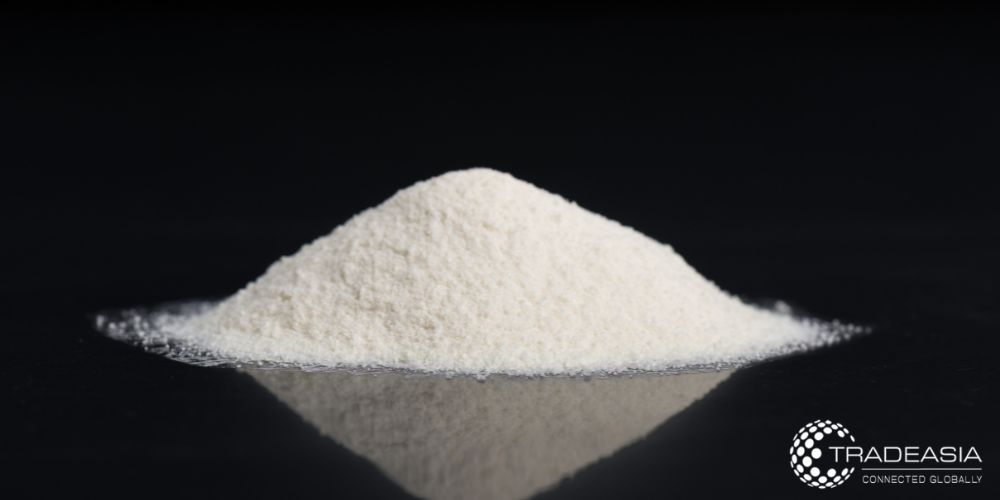Understanding Soda Ash Light
Definition and Basic Properties
Soda Ash Light is a white, crystalline powder that is highly soluble in water. It is derived from naturally occurring trona ore, a mineral deposit primarily found in the United States. Trona ore is formed over millions of years through the evaporation of ancient lakes and is known for its high sodium carbonate content. With a chemical formula of Na2CO3, soda ash light is a strong base and possesses alkaline properties.
When soda ash light is dissolved in water, it forms a solution that is mildly alkaline, with a pH value of around 11. This alkalinity makes it an effective neutralizer and pH regulator in various industries. It can be used to adjust the acidity or alkalinity of solutions, ensuring optimal conditions for chemical reactions and processes.
In addition to its neutralizing properties, soda ash light also acts as a cleaning agent. Its alkaline nature allows it to break down grease, oils, and other organic substances, making it an essential ingredient in many household cleaning products.
Soda ash light has a wide range of applications due to its versatility. It is used in the manufacturing of glass, detergents, soaps, paper, textiles, and even food products. Its ability to modify pH levels, remove impurities, and enhance the performance of other chemicals makes it an indispensable component in various industrial processes.
Production Process of Soda Ash Light
The production of soda ash light involves a multi-step process that starts with the mining of trona ore. Trona deposits are typically found in underground mines and are extracted through drilling and blasting. Once the trona ore is brought to the surface, it is crushed into smaller pieces to facilitate further processing.
The crushed trona ore is then heated in large furnaces in a process known as calcination. During calcination, the trona ore is exposed to high temperatures, causing it to release carbon dioxide and water vapor. This thermal decomposition converts trona into crude soda ash, which contains impurities such as minerals and organic matter.
To obtain high-purity soda ash light, the crude soda ash is further processed through various purification methods. Filtration is used to remove solid impurities, while crystallization is employed to separate the dissolved impurities from the solution. The resulting solution is then dried, resulting in the formation of soda ash light crystals.
The production of soda ash light is a highly efficient and cost-effective process. Advanced technologies are utilized to minimize waste generation and optimize resource utilization. For example, the waste heat generated during calcination can be captured and used for other industrial processes, reducing energy consumption and environmental impact.
Overall, soda ash light is a versatile and essential chemical compound that plays a vital role in numerous industries. Its unique properties and wide range of applications make it an indispensable component in the manufacturing of various products and the optimization of industrial processes.
The Multifaceted Uses of Soda Ash Light
Soda ash light, also known as sodium carbonate, is a versatile compound that finds application in various industries. Its unique properties make it an indispensable ingredient in glass manufacturing, detergent production, and water treatment processes.
Role in Glass Manufacturing
Soda ash light plays a crucial role in the production of glass. As a fluxing agent, it reduces the melting point of silica, the main component of glass, and enhances the flowability of molten glass. This property allows for the creation of a wide variety of glass products, including bottles, containers, flat glass, and fiberglass.
Moreover, soda ash light ensures the production of high-quality glass with excellent transparency, durability, and chemical resistance. Its inclusion in the glass manufacturing process guarantees that the final product meets the stringent standards of the industry.
Importance in Detergent Production
Detergent manufacturing heavily relies on the use of soda ash light. It serves as a crucial ingredient in both powdered and liquid detergents, contributing to their effective cleaning properties.
One of the key functions of soda ash light in detergents is its ability to aid in the removal of stains, grease, and dirt. By increasing the solubility of surfactants, it enhances their cleaning power and ensures thorough washing. Additionally, soda ash light facilitates the formation of stable emulsions, allowing detergents to effectively suspend and remove oily substances.
Furthermore, soda ash light helps regulate the pH of detergents, ensuring optimal cleaning performance. By maintaining the appropriate pH level, it enhances the overall effectiveness of detergents in various water conditions.
The widespread use of soda ash light in detergent production highlights its vital contribution to personal and household hygiene. It enables the creation of effective cleaning products that help maintain cleanliness and freshness in homes and commercial establishments.
Contribution to Water Treatment
Soda ash light plays a significant role in water treatment processes, both in municipal and industrial settings. Its unique properties make it an essential component for pH adjustment and alkalinity control.
In water treatment plants, soda ash light helps maintain appropriate pH levels, preventing corrosion in distribution pipelines. By neutralizing acidic water, it minimizes the risk of pipe degradation and extends the lifespan of the infrastructure.
Additionally, soda ash light aids in alkalinity control, which is crucial for maintaining stable water chemistry. It helps buffer the water against sudden changes in pH, ensuring that the treatment process remains efficient and effective.
Furthermore, soda ash light facilitates the removal of impurities and contaminants from water. It reacts with certain substances, such as heavy metals and organic compounds, forming insoluble precipitates that can be easily removed through filtration or sedimentation.
By contributing to the production of safe and clean drinking water, soda ash light plays a vital role in ensuring public health and well-being.
In conclusion, soda ash light is a versatile compound with multifaceted uses. Its role in glass manufacturing, detergent production, and water treatment processes highlights its importance in various industries. As technology continues to advance, the demand for soda ash light is expected to grow, further driving innovation and development in these sectors.
Environmental Impact of Soda Ash Light

Emission Concerns and Mitigation
While soda ash light offers many benefits, its production and usage can have environmental implications. One significant concern is the emission of greenhouse gases during the calcination process. The release of carbon dioxide contributes to climate change. However, the industry has implemented several mitigation measures, such as carbon capture and storage technologies, to reduce emissions and minimize the ecological footprint of soda ash light production.
Safe Handling and Disposal
Proper handling and disposal of soda ash light are essential to prevent any adverse effects on the environment. Workers involved in the manufacturing, transportation, and usage of soda ash light should follow strict safety protocols and wear appropriate protective equipment. Additionally, any waste generated should be disposed of in accordance with environmental regulations and industry best practices to minimize its impact on ecosystems and water bodies.
Economic Significance of Soda Ash Light

Global Market Overview
Soda ash light is a highly sought-after commodity worldwide, with a robust and dynamic market. Its versatile applications and wide-ranging industrial demand contribute to its economic significance. The rising consumption of glass products, detergents, and water treatment chemicals drives the growth of the soda ash light market. Key players in the industry include major chemical manufacturers and mining companies.
Future Trends and Predictions
The soda ash light market is expected to witness steady growth in the coming years, driven by factors such as population growth, urbanization, and industrial development. Technological advancements in production processes and increased emphasis on sustainability and environmental responsibility are likely to shape the industry’s future trajectory. As demand rises, innovative applications and efficient production methods are anticipated, reinforcing the economic importance of soda ash light.
Health and Safety Considerations

Potential Health Risks
While soda ash light is generally considered safe for use in various applications, certain health risks should be acknowledged. Exposure to high concentrations of soda ash light dust or prolonged skin contact may cause skin irritation or eye discomfort. Ingestion or inhalation of significant amounts may lead to gastrointestinal disturbances or respiratory irritation. It is essential to follow proper safety guidelines and protocols when handling soda ash light to minimize any potential risks.
Safety Measures and Precautions
To ensure the safe handling of soda ash light, it is crucial to maintain adequate ventilation in working areas and use personal protective equipment, including goggles, gloves, and respiratory masks, when necessary. Workers should receive proper training on handling procedures, emergency response protocols, and storage requirements. By implementing appropriate safety measures and precautions, the potential risks associated with soda ash light can be effectively minimized.
In conclusion, soda ash light offers a multitude of benefits across industries, ranging from glass manufacturing to water treatment. Its unique properties and versatile applications make it an indispensable chemical compound in modern society. However, it is crucial to understand the potential environmental, economic, and health implications associated with its production and usage. By adopting responsible practices and adhering to safety guidelines, we can harness the full potential of soda ash light while safeguarding our environment and well-being.

